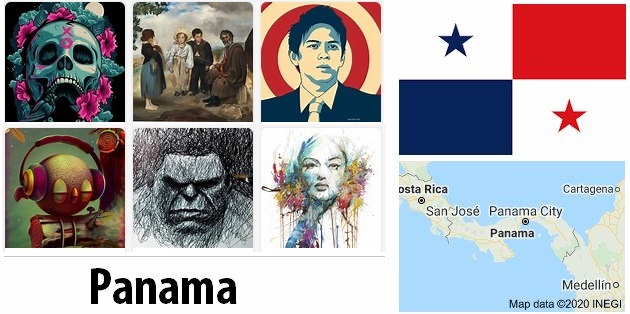Literature, drama and theater
One of the most prominent representatives of Spanish American modernism, Darío Herrera, poet and prose writer, came from Panama. His short story collection “Horas lejanas” (‘Distant Hours’) was published in 1903, the year Panama became an independent nation. Poetry, however, has long been the foremost literary form of expression in Panama. The most influential poet in Panama during the first decades of the 20th century was Ricardo Miró with his gently intimate and romantic lyrical poetry. The social protest was represented by Rogelio Sinán and Demetrio Herrera Sevillano, while Enrique Ruiz Vernacci and Roque Javier Laurenza cultivated pure poetry in the spirit of JR Jiménez. Gaspar Octavio Hernández and Moisés Castillo have brought the case to the blacks. Notably, novelists of different generations are Ignacio Valdés, Enrique Chuez and Gloria Guardia, whose “El último juego” (“The Last Game”.
- Countryaah: Population and demographics of Panama, including population pyramid, density map, projection, data, and distribution.
Panama’s theater has often had a popular, social and political grounding with playwrights such as Renato Ozores and José de Jesús Martínez.
Architecture
Of old Panama City’s (Panamá Viejo) cathedral (1619-50), only ruins remain after pirates burned down the city in 1671. Materials from it were reused in churches in new Panama City: La Merced (1680-1762) and the new Cathedral (1690-1796)) with a Baroque-style facade. The Panama Canal began in 1881. The architecture was favored, and after the country gained independence from Colombia (1903), the Teatro Nacional (1905–08), Palacio Nacional (1910) and Hospital S. Tomás (1920–24) were all built in Panama City. The influence of modernism is evident with Ricardo Bermúdez and Guillermo de Roux, who founded the country’s first school of architecture in 1943. They designed the Escuela de Administración (1949–53) in the Ciudad Universitaria campus and the bank Caja de Ahorros (1948–49), both in Panama City.
Music
The Cuna Indians are known for their special pan flute, kamu-purui, played by two people. The dance tamborito exhibits Spanish and African features and is something of a national dance; the song is accompanied by drums. The dances mejorana and punto are usually accompanied by the guitar-like mejoranera and bocona as well as the fiddle rabel.
The dance cumbia is akin to the same style in Colombia and is accompanied by stringed instruments (sometimes accordion) and percussion. Panama’s most well-known composer, Roque Cordero (1917–2008), used twelve-tone technology, serialism and folk styles.
Panama has a rich and varied musical life with strong influences from the Caribbean. Salsa is very popular with the country’s internationally best known music profile, the composer and salsa artist Rubén Blades (born 1948), as the central figure. The indigenous variant of cumbia is represented by the duo Sammy and Sandra Sandoval (born 1968 and 1970, respectively), who also gave the pop-influenced folkloric style típica, or pindín, a renaissance; a style where the accordion is at the center.
The Spanish-speaking rock is widespread with groups such as Los Rabanes (formed in 1992).
Spanish-speaking reggae and reggaeton are great among the young audience. Important names are El General (born 1964), one of the foreground figures of the reggaeton style, and the artist Flex (or Nigga, born 1980).
Panama also has a vital jazz scene with pianist Danilo Pérez (born 1965) as one of today’s front names.

